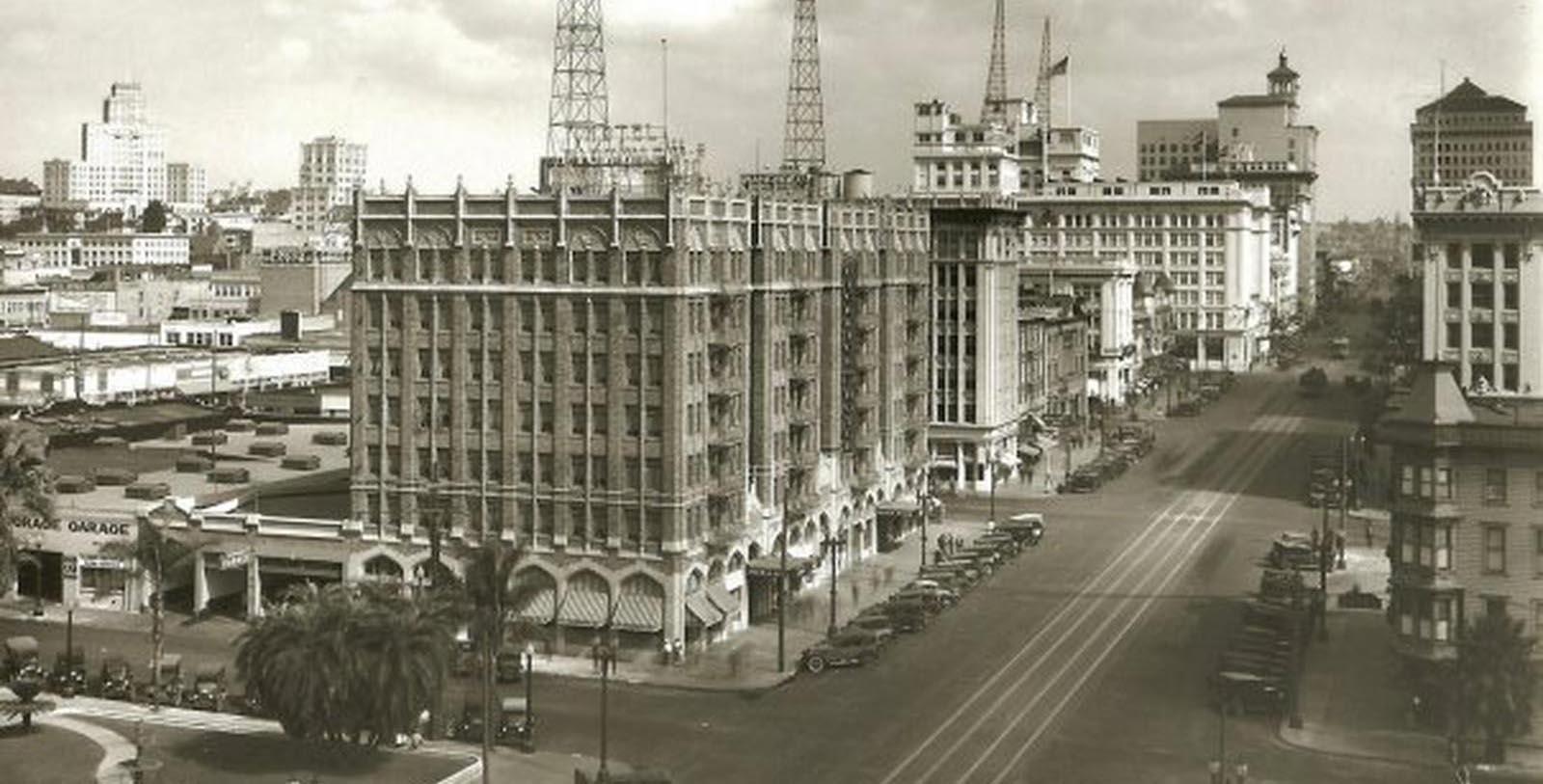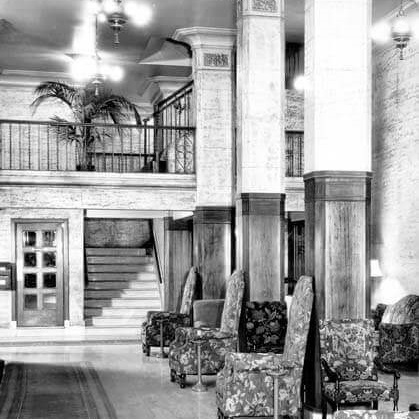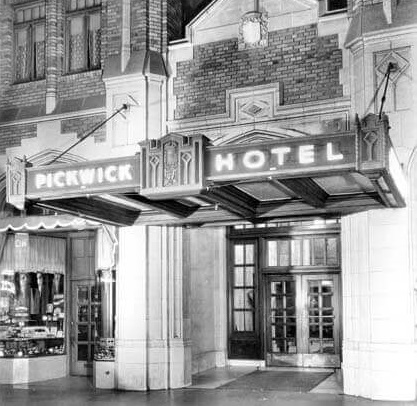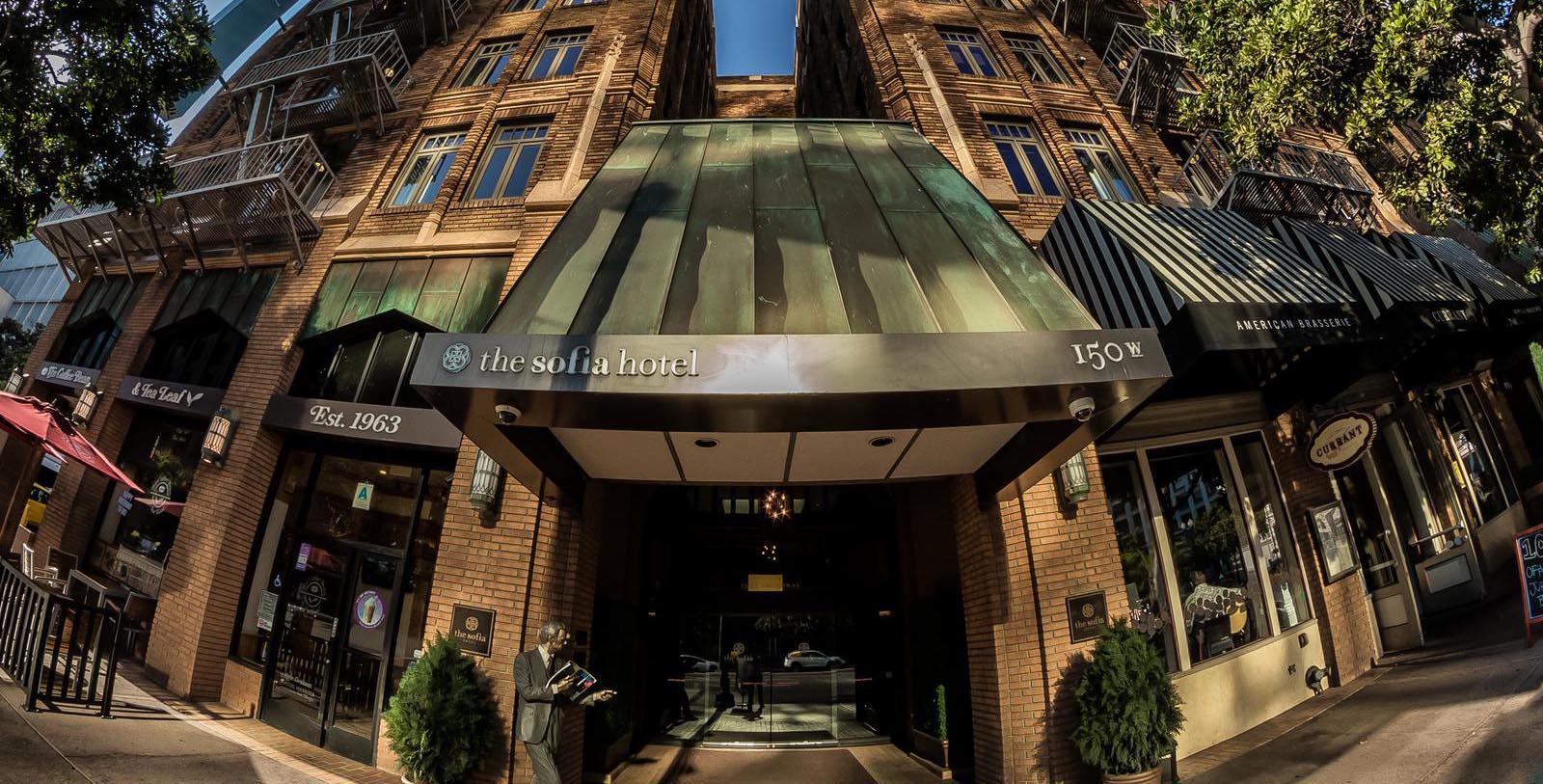Receive for Free - Discover & Explore eNewsletter monthly with advance notice of special offers, packages, and insider savings from 10% - 30% off Best Available Rates at selected hotels.
historic hotel in san diego
Discover the Sofia Hotel and its Gothic Revival-style architecture.
The development of Southern California has been closely linked to the advent of the automobile. Surrounded by the Laguna Mountains and the Pacific Ocean, transportation was a vital element to the area’s evolution at the start of the 20th century. Perhaps one of the most noteworthy developments in this regard was the emergence of the “Limited San Diego and Imperial Valley Stage.” Founded by Charles Wesley Grise in 1911, the business actually offered a touring car service that ferried passengers from one point to another. Later known as the “Pickwick Stages,” the company grew into one of the three major “stage lines” in the United States within a decade of its creation. It subsequently began to develop additional lines as a way to increase demand, with numerous company-owned hotels serving as waypoints. With most of its routes operating around southern California, the Pickwick Company eventually constructed a downtown hotel in San Diego to function as its primary terminal for the region. Work on this impressive structure commenced in 1926, and took months to complete. Architect William Peugh spearheaded the hotel’s design, choosing to use Gothic Revivalism as the source of his inspiration. Indeed, some of the building’s best features showcased the aesthetic, including its crenelated roofline and terra cotta embellishments. When the building finally opened as the “Pickwick Hotel” a year later, it quickly established itself as one of San Diego’s preeminent destinations. The new hotel had become so popular that ownership was forced to expand upon its facilities considerably. In fact, the company debuted a special venue known as “The Piccadilly Lounge,” which entertained visitors and locals alike for generations and remains a notable part of the history of the Sofia Hotel in San Diego.
Part of the hotel’s longstanding success came from a fruitful partnership that Pickwick Stages struck with the legendary Greyhound Lines. Recognizing the emergence of buses and other motor vehicles, Pickwick Stages decided to let Greyhound use the Pickwick Hotel as one of its own stops. In exchange, the company would collect considerable rent from Greyhound’s occupancy. Over time, though, demand from Greyhound’s services overtook those of Pickwick Stages, prompting the former to completely absorb the latter. As a result, Greyhound had come to occupy every floor inside the Pickwick Hotel by the 1950s. (The original name was retained, however.) But despite experiencing years of popularity, the hotel had nonetheless grown significantly weathered at the end of the century. Thankfully, salvation came in the form of Harki Parekh and Ken Winslow, who obtained the site in 1986. Intent on restoring the building back to its former glory, the two arranged for a comprehensive renovation to take place through their mutual corporation, Pickwick Partners. Even though the owners desired to start the work as soon as possible, the construction did not actually begin for another two decades. Taking more than a year to finish, the project fully revitalized the building’s architectural integrity. The entire process finally concluded in 2006, in which the destination reopened as the “Sofia Hotel” to great local acclaim. A member of Historic Hotels of America since 2008, this spectacular historic hotel is now once again one of the best vacation retreats in downtown San Diego. Cultural heritage travelers are certain to enjoy its luxurious hospitality and fascinating heritage.
-
About the Location +
Long considered to be one of the birthplaces of California, San Diego is among the most historic communities on America’s Pacific Coast. The area’s first inhabitants were actually various tribes of Native Americans, including the Kumeyaay, the Payoomkawichum, and the Cahuilla. They occupied numerous settlements throughout the borders of present-day San Diego, with the largest being the village of Cosoy. Indeed, it was these indigenous people that the first Europeans encountered when they arrived during the 16th century. Led by Spanish explorer Juan Rodríguez Cabrillo, the group had sailed north from the port of Navidad to chart the coastline. Upon sailing to the region in 1542, Cabrillo and his team claimed the territory on behalf of the Spanish Empire and named it “San Miguel.” Additional Spanish mariners continued to visit the region over the next two centuries, who eventually gave it the new title of “San Diego” in honor of a famous monk that lived in Alcalá de Henares. Nevertheless, no permanent Spanish presence appeared until the arrival of the Gaspar de Portolá during the latter half of the 18th century. He specifically created a military outpost known as a “presidio” in 1769, which adopted the name of the surrounding area. The presidio itself remained fairly small, save for a Franciscan mission that priest Junípero Serra constructed alongside it at the same time. (The mission was the first of a series that Serra created along the California seashore.) But settlers began to develop a town around the complex in the wake of the Mexican War of Independence that also assumed the name “San Diego.” The community initially grew in size shortly thereafter, although tensions with the neighboring Kumeyaay ultimately stunted its growth.
Despite its miniscule size, San Diego nonetheless became a strategic American target during the Mexican-American War. The town was one of several that the United States had captured as part of its greater effort to conquer California. Following the war, San Diego rapidly gained national economic importance throughout America due to its proximity to a natural harbor. To help facilitate its development, entrepreneur Alonzo Horton spearheaded the creation of a whole new section of San Diego closer to the ocean. This district was subsequently referred to as the “New Town,” while the original settlement became known as the “Old Town.” (The New Town is known locally today as the celebrated “Gaslamp Quarter.”) The relocation greatly affected the town’s future, allowing it to grow into a full-fledged city at the start of the 20th century. Also assisting San Diego’s growth was the arrival of the Santa Fe Railway during the 1880s, which allowed for the goods to head further into the American interior. As such, San Diego had become one of the country’s major metropolises by the 1920s. San Diego’s status as a thriving seaport inspired the various branches of the American military to eventually open their own facilities throughout the area, too. Among the most prominent were Camp Pendleton, Naval Base San Diego, and Marine Corps Air Station Miramar, which later played invaluable roles in conflicts like World War II, the Korean War, and the Vietnam War. Today, San Diego retains its prestigious identity as one of California’s top communities. Not only is it the state’s second largest city, its also among its most culturally vibrant. San Diego is also home to many fascinating destinations as well, such as the Balboa Park, the Gaslamp Quarter, and the Old Town State Historic Park.
-
About the Architecture +
The Sofia Hotel stands in downtown San Diego today as a brilliant example of Gothic Revival architecture. Gothic Revival-style architecture itself is part of the artistic movement known as “Romanticism,” which swept through Europe and North America for much of the 19th century. This demarcated a distinctive break from the Neoclassicism of the century prior, which drew its architectural inspiration from the Greco-Roman civilizations of antiquity. The desire for the medieval design principles of Gothic Revival architecture reflected a broader trend within Western societies—particularly in European countries—to preserve the past in some meaningful way. As such, architects took to preserving the surviving buildings from the period, while also creating new ones that mirrored the aesthetic. The most common structural elements incorporated into buildings developed with Gothic Revival style were the pointed arch. This profound feature manifested in windows, doors, and rooftop gables. Yet, it also influenced the development of entire substructures, causing the creation of such features as mock parapets, conical towers, and high spires. Other characteristics associated with Gothic Revival-style architecture included a special kind of wooden trimming known as either vergeboards or bargeboards. Porches also featured turned posts or slender columns, while the roof was often deeply pitched and lined with dormers. Architects typically used this style for rural buildings set within a historic village or town, although some in the field—such as Thomas Pringle in America—chose it for commercial structures from time to time. Churches were the buildings that featured Gothic Revival style the most, as their natural layout was well-suited to showcase the best of the form.







































